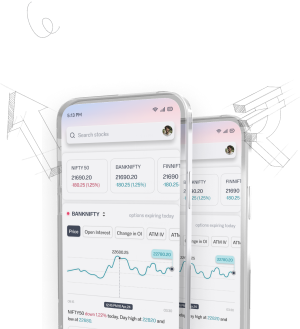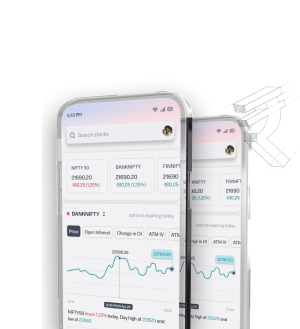Wyckoff Method: Richard Wyckoff's Study of Supply and Demand
The Wyckoff Method, devised in the early 1900s by Richard Wyckoff, still serves as one of the most helpful tools a trader can possess. It works through supply and demand to establish an ideal buy and sell point. We understand the market cycle with price and volume changes. This guides our trading plans.
Richard Wyckoff's method focuses on the market cycle, which has four stages: accumulation, markup, distribution, and markdown. Understanding these stages helps us see trading patterns and guess price changes. Wyckoff explained that market trends don't always happen the same way, but learning about them helps us make better trading decisions. By using the Wyckoff Method, we can make wise trading choices, regardless of the market conditions.
Main Points
The Wyckoff Method guides traders in stock selection and timing. It exploits knowledge of the four phases of the market cycle. It develops different phases of the market because price movements are determined by supply and demand dynamics. Wyckoff's method highlights how important volume is when analyzing price movements. The 'Composite Man' idea shows how big investors affect market trends.
Each of these phases in the Wyckoff cycle clearly indicates trader behavior and market direction.
Introduction to the Wyckoff Method
The Wyckoff Method was created in the early 1900s by Richard D. Wyckoff. It provides a nice framework for understanding market trends through the logic of supply and demand. The methodology details how big investors, often referred to as "Smart Money," actually move the market and, from that, shows good opportunities that are really hard to notice.
This method focuses mainly on the relationship between price and volume. By analyzing these, we derive information about market conditions and liquidity. It breaks down the market into four major phases: accumulation, advancing, distribution, and declining. In this way, we can project where the market might head from there.
Key concepts in this approach include the Composite Man and the laws of Supply and Demand. The latter two lay the groundwork for traders to know why markets move up and down. We could assess the conditions of when the market is buying or selling by using Wyckoff charts. This is important toward making good trading plans.
Now, let us see how fine this method works with the understanding we have now in different markets: forex, commodities, cryptocurrencies, and stocks. With that understanding, we will confidently deal in the complex world of markets.
Understanding Demand and Supply in Trading
The Wyckoff Method is based on supply and demand. Richard Wyckoff said that when demand is greater than the supply, prices go higher. However, when supply is greater than demand, prices drop. If both are the same, the price remains steady. This goes on to show how market behavior helps us trade more effectively.
There are the same amount of buyers and sellers in any market. They match orders by watching price moves. Volume matters. It impacts price. Buyers or sellers set limits that show us where prices could go.
Trading psychology teaches us how orders change prices. If a side is quiet, then suddenly prices can rise high. It is important for a price change to be active. The Wyckoff Method is studying price movements along with volume for understanding markets.
The Wyckoff Method with Volume Profile helps traders. Demand zones mostly have close prices before a big move. Be aware of big candle wicks and sudden movements. They don't indicate good trading places.
Supply zones are normally stable regions of the market over a very short time frame and are ideal re-entry locations. The 'Spring' has a certain psychological explanation of why people would want to buy. The supply and demand knowledge helps us in executing good trades. Richard Wyckoff ideas teach how to use these market changes for our benefit.
The Four Steps of the Wyckoff Market Cycle
The Wyckoff market cycle shows the main steps of how the market acts. Knowing these helps us understand better the price changes and, consequently, make better trading plans. There are four main stages the trader should understand well.
Accumulation Phase
The accumulation phase begins a Wyckoff market cycle. During this phase, large investors accumulate shares at lower prices. The sideways trading range indicates no big price changes, but at the same time, smart money is preparing for reaping in profits. The identification of this phase only helps us draw early opportunities.
Markup Phase
After the gathering of stocks, we enter the markup phase. Demand for the stock surges, and prices go up. This phase then leads to more trading and a good outlook in general. Traders can make money by noticing this trend and changing their plans.
Distribution Phase
When the prices go too high, we enter the distribution phase. Big investors sell to others, stabilizing the prices but with a lot of buying and selling. This phase is important because it signals a possible change in how the market feels. It warns us to become extra cautious on new trades.
Markdown Stage
A markdown is the final phase in a Wyckoff market cycle. In this phase, there is greater selling pressure than buying pressure, pulling prices downwards. This can create panic selling. Recognizing markings of markdown gives us the ability to avoid big losses and also be ready for the next cycle.
| Step | Description | Trading Plan |
|---|---|---|
| Accumulation Phase | Institutional buying occurs at lower prices, creating a sideways range. | Look to enter as demand picks up. |
| Markup Phase | When demand overwhelms supply, prices move up. | Add to the position in order to ride the uptrend. |
| Distribution Phase | Smart money sells to latecomers; price movement stalls. | Consider taking profit, and watching for market signals. |
| Markdown Stage | Supply overtakes demand and truth outprices reality. | Install Stop-Loss orders to limit risk. |
Knowing the four phases of a Wyckoff market cycle enables us to make good trading choices; within each phase, there are opportunities and risks that help us navigate through the changing world of financial markets.
Main Concepts of the Wyckoff Method
More seriously important to the Wyckoff Method are those that help us in understanding market trends and better trading planning. Basically, these are the Law of Supply and Demand, the Law of Cause and Effect, and the Law of Effort versus Result. They help in giving us an insight into the change of price and volume.
The law of supply and demand says that prices change when buyers and sellers are in balance or not. This rule helps us find good times to trade.
The law of cause and effect shows that changes within the market arise from deeper reasons. One can understand why prices went up or down if we examine past prices and data. This helps us make better trading decisions.
The law of effort versus result takes into consideration the volume in respect to price changes. The bigger the change in price with much trading, the bigger the resultant strength. A slight change boded with little trading indicates weakness. This helps us understand market trends better.
| Aspect | Description |
|---|---|
| Trading Psychology | Influences decision-making, often swayed by emotions. |
| Behavior Finance | Studies how psychological factors affect financial decision-making. |
| Smart Money | Institutional investors or traders with deep market insight. |
| Market Emotions | Feelings that can drive market trends, shaping trading results. |
Learning these Wyckoff principles gives us the tools to create better trading plans. Knowing them helps us understand market trends more clearly. This puts us in a strong position for trading success.
Trading Mindset and the Wyckoff Way
Trading psychology strongly influences our decisions and how we engage with the market. Emotions like fear and greed can lead us to make unreasonable choices. The Wyckoff Method aids us in steering clear of these emotional pitfalls by using a structured method.
This approach is based on the behavioral finance of the market. It shows how our emotions are affecting our actions.
Knowing about "smart money" is important. "Smart money" typically alludes to large investors with access to tools and available information that can enable clear understanding of the market. We can make wise trading decisions by examining what smart money is doing. This helps us stick to proven patterns, not just our feelings.
The Wyckoff Method makes market behavior easy to understand by breaking it into clear phases. This helps us stay calm and pay attention to price and volume. As we improve at reading the market, we realize that understanding feelings can lead to better trading habits.
The Wyckoff Method is a guide to balancing the unpleasant aspects of trading. It shows how to study the market, act upon something other than emotions, and in the process become better traders.
Using the Wyckoff Method in Your Trading Strategy
In our trading strategy, the Wyckoff Method should be applied while being super careful about when you buy and sell. We look at price charts for important patterns, which are an indication that the market is changing from one phase to another.
This will help us to select better times for trading. It would be important to get the best from market timing.
Locating Where to Enter and Exit
Entry and exit points are very significant in trading. In the phase of accumulation, prices are warranted and not very alterable. A breakout from these areas can signify that a new uptrend is in place. It's a good time to enter.
In the markup phase prices go to higher points and then to lower points, creating wider trading ranges. This shows us that the trend is strong. We look for the best times to buy using the upward trend.
Volume Analysis In Play
Volume analysis is useful in telling us whether changes in price are for real. All strong buying gets reflected in price appreciation in the markup phase, helping us believe in the trend even more.
But greater volume in the distribution phase, with lower highs and more selling, warns us that a trend might change. This aids in helping us establish a clear point of exit. It keeps our profits safe and lowers the risks during downtrends. This understanding will make your trading strategy stronger.
Common Trading Mistakes To Be Avoided By Wyckoffians
The Wyckoff Method is a valid foundation for trading. However, there are common mistakes that need to be known and corrected along the way in order to find success. A major flaw is into low price changes. This can cause us to misunderstand signals and make bad decisions.
The big mistake is not viewing volume closely. With no consideration of strength in buying or selling, we forgo vital market data and are open to making big mistakes of the Wyckoff Method. This would place us on the wrong side of the market.
Strong emotions during market changes present a problem. For example, people with a fear of decreasing prices may ignore their plans. Feeling very happy with rising prices may make us take ridiculous steps. Calmness and logical thinking are important for proper use of the Wyckoff Method.
| Mistakes | Description | Consequences |
|---|---|---|
| Making decisions unaware of the broader market reality. | Misinterpreting the actual signals of the market. | Poor trading decisions |
| Inadequate volume analysis. | Performing poor volume studies. | Incorrect assessment of market strength. |
| Emotional Trading | Decisions are impulsive and based on emotional reaction rather than reasoned analysis. | Straying from trading strategy and increasing risks. |
Knowing these common mistakes helps us use the Wyckoff Method more effectively. It keeps our market analysis strong and well-informed. With this knowledge, we can deal with trading's challenges more successfully and aim for improved results.
Is the Wyckoff Method Relevant for Today's Traders?
The Wyckoff Method is helpful for the trader, big or small. The ideas of one way back, Richard D. Wyckoff, have been time-tested and work quite well with modern trading. This helps a trader understand the cycles of the market, which is highly important in trading items like stocks and cryptocurrencies.
Trading tools have also improved, and so has the Wyckoff Method. It allows us to adapt to new changes in the market. We understand from the three laws of trading how prices change. We will then be able to make better judgments by using these laws with new analysis.
The Wyckoff Price Cycle helps us understand market phases such as buying and selling, which helps one to manage risks and elicit the best out of market trends. The strategies of Wyckoff make it so definite for a person to see crucial market signals.
Applying the Wyckoff Method to new trading tools lets us better understand the market. This way, we can pinpoint the best times to buy and sell. The Wyckoff ideas are still very helpful, be it with mouthy cryptocurrencies that seems to flip in a second, or normal stocks, part of which we will use to trade.
Conclusion
The Wyckoff Method is important for understanding market trends. It shows us about supply and demand, price patterns, and volume. These ideas help us trade more effectively. The Wyckoff Method makes the trading process more transparent. Learning to understand market operations on the basis of the activities of influential investors is helpful in making coordination with our trading intentions for better results. The Wyckoff Method is important for us traders today. This helps us realize how the market works and makes our trading strategies better. By getting into the methods, we prepare oneself for successful trading.
FAQ
Q: What is Wyckoff Method?
A: Richard Wyckoff originated the Wyckoff Method. It employs technical analysis in the study of market trends and looks at supplies and demands in order for trades to make good decisions.
Q: How does Wyckoff Market Cycle work?
A: The Wyckoff Market Cycle has four parts: Accumulation, Markup, Distribution, and Markdown. Each part shows how the market changes based on what big traders do.
Q: Why is it important to understand supply and demand in trading?
A: Understanding the relationship between supply and demand gives us a clue about predicting future price movements. If demand exceeds supply, prices are escalated. Equally, if supply is below demand, the price is escalated.
Q: What is the role of trading psychology in the Wyckoff Method?
A: Trading psychology influences our interpretation of market signals and how they materialize into a trade. The Wyckoff Method helps us stay calm and make wise decisions while preventing poor decisions made from greed or fear.
Q: Can one use the Wyckoff Method in trading cryptocurrencies?
A: Yes, the Wyckoff Method works with many types of assets, including cryptocurrencies. It helps us understand how markets move and behave in all situations.
Q: What are some common mistakes to avoid when using the Wyckoff Method?
A: Don't consider the changing of prices alone; look at the whole picture. Ignoring volume is rather dangerous. And don't let your emotions guide your trading through the ups and downs of the market.
Disclaimer
The content provided is for educational purposes only and does not constitute financial advice. For full details, refer to the disclaimer document.




